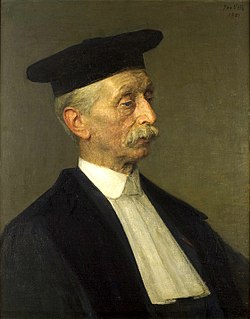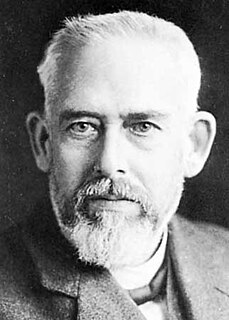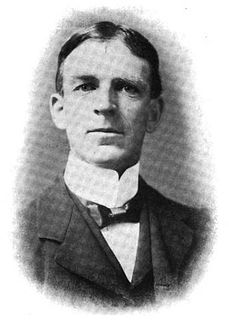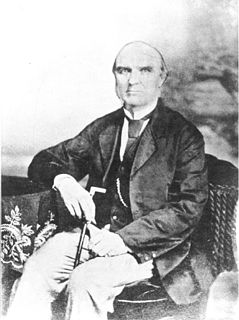
A star catalogue or star catalog is an astronomical catalogue that lists stars. In astronomy, many stars are referred to simply by catalogue numbers. There are a great many different star catalogues which have been produced for different purposes over the years, and this article covers only some of the more frequently quoted ones. Star catalogues were compiled by many different ancient people, including the Babylonians, Greeks, Chinese, Persians, and Arabs. They were sometimes accompanied by a star chart for illustration. Most modern catalogues are available in electronic format and can be freely downloaded from space agencies' data centres. The largest is being compiled from the spacecraft Gaia and thus far has over a billion stars.

Vulcan is a small hypothetical planet that was proposed to exist in an orbit between Mercury and the Sun. The 19th-century French mathematician Urbain Le Verrier hypothesized that peculiarities in Mercury's orbit were the result of another planet, which he named "Vulcan".

Charles Lane Poor was an American astronomy professor, noted for his opposition to Einstein's theory of relativity.

Prof Jacobus Cornelius Kapteyn FRS FRSE LLD was a Dutch astronomer. He carried out extensive studies of the Milky Way and was the discoverer of evidence for galactic rotation. Kapteyn was also among the first to suggest the existence of dark matter using stellar velocities as early as 1922.
Astrophysics is a science that employs the methods and principles of physics in the study of astronomical objects and phenomena. Among the subjects studied are the Sun, other stars, galaxies, extrasolar planets, the interstellar medium and the cosmic microwave background. Emissions from these objects are examined across all parts of the electromagnetic spectrum, and the properties examined include luminosity, density, temperature, and chemical composition. Because astrophysics is a very broad subject, astrophysicists apply concepts and methods from many disciplines of physics, including classical mechanics, electromagnetism, statistical mechanics, thermodynamics, quantum mechanics, relativity, nuclear and particle physics, and atomic and molecular physics.

Maximilian Franz Joseph Cornelius Wolf was a German astronomer and a pioneer in the field of astrophotography. He was the chairman of astronomy at the University of Heidelberg and director of the Heidelberg-Königstuhl State Observatory from 1902 until his death in 1932.

Charles Dillon Perrine was an American astronomer at the Lick Observatory in California (1893-1909) who moved to Cordoba, Argentina to accept the position of Director of the Argentine National Observatory (1909-1936). The Cordoba Observatory under Perrine's direction made the first attempts to prove Einstein's theory of relativity by astronomical observation of the deflection of starlight near the Sun during the solar eclipse of October 10, 1912 in Cristina (Brazil), and the solar eclipse of August 21, 1914 at Feodosia, Crimea, Russian Empire. Rain in 1912 and clouds in 1914 prevented results.

Robert Thorburn Ayton Innes FRSE FRAS was a Scottish astronomer best known for discovering Proxima Centauri in 1915, and numerous binary stars. He was also the first astronomer to have seen the Great January Comet of 1910, on 12 January. He was the founding director of a meteorological observatory in Johannesburg, which was later converted to an astronomical observatory and renamed to Union Observatory. He was the first Union Astronomer. Innes House, designed by Herbert Baker, built as his residence at the observatory, today houses the South African Institute of Electrical Engineers.

Otto Wilhelm von Struve was a Baltic German astronomer. In Russian, his name is normally given as Otto Vasil'evich Struve. Together with his father, Friedrich Georg Wilhelm von Struve, Otto Wilhelm von Struve is considered a prominent 19th century astronomer who headed the Pulkovo Observatory between 1862 and 1889 and was a leading member of the Russian Academy of Sciences.

Heber Doust Curtis was an American astronomer. He participated in 11 expeditions for the study of solar eclipses, and was involved in the 1920 Shapley–Curtis Debate concerning the size and galactic structure of the universe.

William Wallace Campbell was an American astronomer, and director of Lick Observatory from 1901 to 1930. He specialized in spectroscopy.

Marian Albertovich Kowalski was a Polish-Russian astronomer. Sometimes his last name is given as Kovalsky or Koval'sky or Koval'skiy. In the scientific literature, his name was given as Kowalski or Kowalsky.

Benjamin Apthorp Gould was a pioneering American astronomer. He is noted for creating the Astronomical Journal, discovering the Gould Belt, and for founding of the Argentine National Observatory and the Argentine National Weather Service.

The Cincinnati Observatory is located in Cincinnati, Ohio on top of Mount Lookout. It consists of two observatory buildings housing an 11-inch (28 cm) and 16 inch (41 cm) aperture refracting telescope. It is the oldest professional observatory in the United States. It was a key facility for astronomical research and education at the University of Cincinnati and currently operates as a 19th-century observatory. There are regular viewings through both historical telescopes as well as tours and additional programs. The observatory also has an extensive outreach program, providing astronomical education for the Ohio/Kentucky/Indiana region.

Ormond Stone, was an American astronomer, mathematician and educator. He was the director of Cincinnati Observatory and subsequently the first director of the McCormick Observatory at the University of Virginia, where he trained a significant number of scientists. He served as the editor of the Annals of Mathematics and towards the end of his life made donations which led to the founding of the Fairfax Public Library System.

Thomas Jefferson JacksonSee was an American astronomer whose promulgated theories in astronomy and physics were eventually disproven. His educational and professional career were dogged by conflict, including his attacks on relativity. He was fired from his position at two observatories, eventually serving out his professional years at a naval shipyard in California.

Norman Robert Pogson, CIE was an English astronomer who worked in India at the Madras observatory. He discovered several minor planets and made observations on comets. He introduced a mathematical scale of stellar magnitudes with the ratio of two successive magnitudes being the fifth root of one hundred (~2.512) and referred to as Pogson's ratio.
Mikhail Fedorovich Subbotin was a Soviet mathematician and astronomer who calculated orbits of planets and comets. He worked on general properties of motion in the n-body problem.

The Eddington experiment was an observational test of General Relativity, organised by the British astronomers Frank Watson Dyson and Arthur Stanley Eddington in 1919. The observations were of the total solar eclipse of 29 May 1919 and were carried out by two expeditions, one to the West African island of Príncipe, and the other to the Brazilian town of Sobral. The aim of the expeditions was to measure the gravitational deflection of starlight passing near the Sun. The value of this deflection had been predicted by Albert Einstein in a 1911 paper, and was one of the tests proposed for his 1915 theory of General Relativity. Following the return of the expeditions, the results were presented by Eddington to the Royal Society of London, and, after some deliberation, were accepted. Widespread newspaper coverage of the results led to worldwide fame for Einstein and his theories.

















